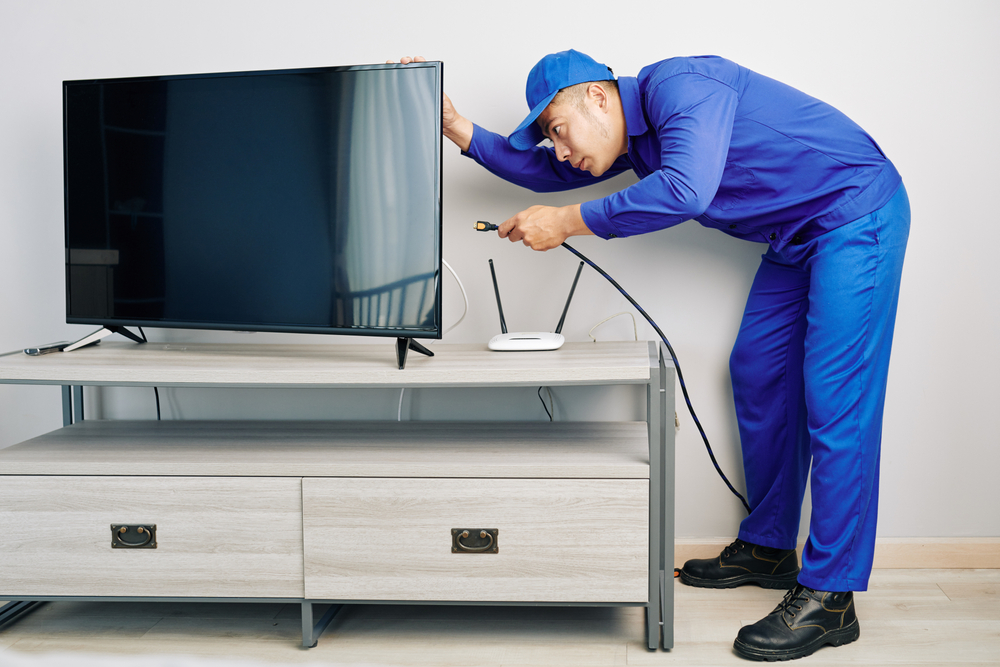Living in today’s world means facing rising costs for many goods and services that were once more affordable. From the daily essentials to the little luxuries, prices are climbing higher and higher. This shift has led many of us to make some tough choices about what we can still afford and what we have to let go. People everywhere are adjusting to this new financial reality. Here’s a look at some things that have become so costly that folks are now doing without them.
Contents
- 1 Concert Tickets
- 2 Air Travel
- 3 Health Insurance
- 4 College Tuition
- 5 Cable Television
- 6 Dining Out
- 7 Childcare
- 8 Homeownership
- 9 Prescription Medications
- 10 Gym Memberships
- 11 Movie Theaters
- 12 Luxury Fashion
- 13 Home Renovations
- 14 More From RetailShout
- 15 17 Regional German Foods Everyone Needs To Try
- 16 15 Fun Food Crafts To Make For Someone You Love
Concert Tickets

In recent years, the price of concert tickets has soared, making live music events a luxury for many. High demand, coupled with service fees and the rise of secondary markets, has contributed to these inflated prices. People who once attended multiple concerts a year are now limiting their attendance or avoiding them altogether. Additionally, the cost of travel, accommodation, and merchandise at events adds to the overall expense. As a result, many fans are turning to live streams and recorded performances as a more affordable alternative.
Air Travel

Air travel has become prohibitively expensive for many, especially with the added costs of baggage fees and other surcharges. The increase in fuel prices and the financial impact of the pandemic have driven up ticket prices. Additionally, reduced competition on certain routes has allowed airlines to maintain higher fares. Many people now opt for road trips or train travel as cheaper alternatives. Frequent flyers have also cut back on leisure travel, reserving flights primarily for essential trips.
Health Insurance

Health insurance premiums have risen significantly, making it difficult for individuals and families to afford coverage. High deductibles and out-of-pocket expenses further burden policyholders. As a result, some people are choosing to forgo insurance, risking financial ruin in the event of serious illness or injury. The complexity of insurance plans and lack of transparency in costs contribute to the issue. Many are turning to health savings accounts and seeking alternative forms of medical care to mitigate expenses.
College Tuition

The cost of college tuition has skyrocketed, leaving many students and families unable to afford higher education without incurring significant debt. Scholarships and grants often fall short of covering the full cost of attendance. As a result, more students are attending community colleges or forgoing college altogether. The burden of student loans deters some from pursuing degrees that don’t guarantee high-paying jobs. The rising costs also impact graduates’ ability to buy homes and start families, affecting broader economic trends.
Cable Television

Cable television subscriptions have become increasingly expensive, prompting many people to cut the cord. The availability of cheaper streaming services offering customizable viewing options is an attractive alternative. Bundled packages with channels that consumers don’t watch add to the frustration. Additionally, frequent price hikes and hidden fees have driven subscribers away. The rise of on-demand content and internet-based entertainment options continues to reshape how people consume media.
Dining Out

The cost of dining out has increased, making it a less frequent indulgence for many people. Rising food prices, labor costs, and operational expenses contribute to higher menu prices. Diners are now more selective, often reserving restaurant visits for special occasions. The trend towards meal prepping and cooking at home has grown, driven by both cost savings and health considerations. Restaurants have responded by offering promotions and loyalty programs to retain customers.
Childcare

Childcare costs have become a significant financial burden for many families. The high cost of daycare, preschool, and after-school programs often rivals or exceeds the cost of rent or mortgage payments. This financial strain has led some parents to adjust their work schedules, seek flexible working arrangements, or even leave the workforce. The lack of affordable childcare options impacts economic productivity and family wellbeing. Community-based solutions and government assistance programs are critical to addressing this issue.
Homeownership

The dream of homeownership is becoming increasingly unattainable due to skyrocketing property prices and interest rates. Many first-time buyers are priced out of the market, leading them to continue renting or living with family. The high cost of down payments and closing costs further complicates the buying process. Additionally, maintenance and property tax expenses add to the financial burden of owning a home. Urban areas, in particular, have seen significant price increases, pushing people to consider more affordable rural or suburban options.
Prescription Medications

The cost of prescription medications has risen sharply, making it difficult for many to afford essential treatments. Price hikes, even for generic drugs, put a strain on budgets, especially for those without comprehensive insurance. Patients often resort to rationing their medications, seeking alternative therapies, or ordering from international pharmacies. The lack of price regulation and transparency in the pharmaceutical industry exacerbates the issue. This trend has serious implications for public health and the management of chronic conditions.
Gym Memberships

Gym memberships have become a luxury for many, with high monthly fees and additional costs for classes and personal training. The convenience of home workouts, driven by advancements in fitness technology and online programs, offers a more cost-effective alternative. The pandemic accelerated the shift towards virtual fitness, with many people investing in home gym equipment. As a result, traditional gyms are losing members and adapting by offering hybrid models and flexible membership options. The trend towards personalized fitness solutions continues to grow.
Movie Theaters

The cost of going to the movies, including tickets, concessions, and parking, has made it a less frequent outing for many. Streaming services provide a cheaper and more convenient way to watch films at home. The experience of large screen and surround sound is often reserved for blockbuster releases or special occasions. Movie theaters are responding by offering subscription plans and enhanced viewing experiences to attract audiences. Despite these efforts, the convenience and affordability of home entertainment remain strong competitors.
Luxury Fashion

Luxury fashion items have become increasingly inaccessible due to high prices driven by brand prestige, quality materials, and craftsmanship. Consumers are turning to fast fashion and second-hand markets as more affordable alternatives. The rise of rental services and resale platforms reflects a shift towards sustainable and cost-effective fashion choices. Economic uncertainty has further influenced spending on luxury goods. As a result, many are prioritizing value and versatility over brand names.
Home Renovations

The cost of home renovations has escalated, driven by the rising prices of materials and labor shortages. Homeowners are delaying or scaling back renovation plans due to these increased expenses. DIY projects and budget-friendly upgrades have become more popular as alternatives. The high demand for skilled contractors and long wait times add to the challenge of undertaking major home improvements. This trend affects not only personal living spaces but also the real estate market, where updated homes command higher prices.
This article originally appeared on RetailShout
More From RetailShout
10 Remarkable Origin Stories Behind Popular Foods

Imagine biting into a slice of pizza or savoring a scoop of ice cream and wondering where these delicious treats came from. Well, every dish has a story, and some of your favorite foods have origins that are as interesting as their flavors. Read More.
17 Regional German Foods Everyone Needs To Try

Germany’s culture and traditions vary greatly across its regions, and this diversity is evident in its food. Each area boasts its own unique dishes, crafted with local ingredients and a strong sense of pride. Read More.
15 Fun Food Crafts To Make For Someone You Love

Crafting food gifts for someone you love is a wonderful way to show your thoughtfulness and creativity. These handmade treats can be tailored to the person’s preferences and personality and serve as meaningful gestures of affection. Read More.






